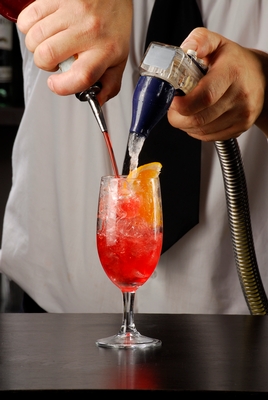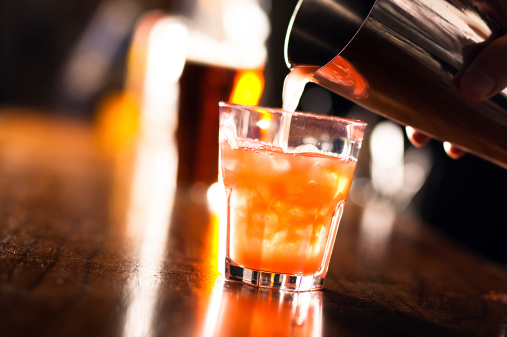How to get new customers through the door and keep them coming back for more
09 Apr, 2014 | Tags: bar scheduling software, Employee morale, employee satisfaction, Employee Schedule, Employee schedule calendar, employee schedule template, Employee Schedules, Employee Scheduling, employee scheduling program, Employee Scheduling Software, New customers, online employee scheduling, restaurant schedules, restaurant scheduling software, Scheduling, Staff Scheduling, Staff Scheduling Software, Workforce Scheduling
Getting new customers through the door is a large feat in itself, but keeping them can be just as challenging. There are many factors that play into the customer experience. We have put together the list of some simple and budget friendly ways to get new customers, and a list of reasons that weighs heavily on their decision to come back.
How do I attract new customers?
Getting new customers is the goal of all businesses; you cannot grow by simply maintaining your current customers, you need new customers. Trying a new restaurant is a big gamble for most people in today’s market, as they are very selective on where they spend their hard earned money.
Standout
You need to be known for something, it can be type/ethnicity of food you offer, special promotions or signature dishes.
Be social
If people don’t know that you are out there, how are they ever going to walk in the door? Social Media is huge in today’s culture, not only can you share images, articles and experiences, but now with “check-ins” friends of your patrons can see that they came to your establishment.
Offer deals
A great way to get new customers to try your bar or restaurants is to offer special deals for new customers, such as a free appetizer or shared dessert.
How do I keep customers coming back?
Now that you have new customers coming in the door, let’s look at the flip side of keeping them coming back for more. There are many reason that you could experience slow nights (bad economy, it’s a week night or that there are no special events or holidays) that are out of your control. Here are the top 3 reasons within your control that make customers decide not to return to your bar or restaurant.
Current Menu
Regularly check your menu to ensure that your pricing is aligned with your target demographic and that you are mixing in enough seasonal/trendy offerings with your signature dishes to keep customers interested and coming back for more.
Loyalty Programs
Loyalty programs can be as simple as deals based on the amount of money spent during each visit and/or the number of visits, and offer discounts on future purchases.
Welcoming Atmosphere
You guests have come to you not only for food and drink, but an enjoyable time with friends and family. Some of the top areas of importance include clean floors/tables/bar, clean bathrooms and the service that they receive.
How do I ensure employee satisfaction?
To ensure your customers will have a great experience, you must have a happy staff providing high quality service. The number one reason for employee dissatisfaction stems from scheduling. Scheduling includes ensuring that you have the right number of staff on for your customer level and ensuring that you fairly allot time-off and/or overtime shifts. What Time Do I Work.com offers easy-to-use and affordable online scheduling software designed to make scheduling a staff of any size a breeze with features like automatic staff communication about schedules, the ability to track and store employee time-off requests and scheduling conflicts and overtime alerts. Try What Time Do I Work.com for yourself today and get the first 30 days free.
How to host a successful Game/Trivia Night
20 Mar, 2014 | Tags: bar scheduling software, Bar Trivia, conflict free schedule, Employee Schedule, Employee schedule calendar, Game Night, Group Hangout, Staff Scheduling Software, Trivia Night, workforce schedule
Recent trends are showing that people are no longer just going out with friends to hang out, but that they want something do when they head to the local watering hole. So what are you to do? The answer is simple: host Game/Trivia Nights to keep people coming back and increasing length of stay (which also results in higher sales). This is also a great way to get new customers through the door not only for the activities but through word of mouth marketing. To make these events successful we have put together a list of the top 5 tips.
Select Event
The first place to start is looking around your bar. The set up and resources in your bar will determine the events/activities that you can offer. Do you have pool tables, darts, etc. and/or do you have a stage area or room for patrons to participate and watch the events? You need to match the activity to your bar, and remember that people will also come to watch the fun.
Select a Theme
If you bar has a theme (sports, tropical, etc.) you should incorporate that theme into you activities. So for sports fans you could host trivia nights that are based on sporting facts. Little touches will make a big impression and keep people coming back through your door. Another great option for a theme could be based on the local area.
Promote Your Events
You can’t have successful events without promotion. This does not mean that you need to take an ad out in the daily news, but posting information on social media is a great place to get started. If you have outdoor signage, that is a great place to promote upcoming events. You can also include flyers around the bar and on the tables for a few days leading up until the events.
Special Offerings
A great way to increase sales during these events is to offer special appetizers or drinks at discounted rates while the activity is happening. You could also create some special menu items that can be shared during the events.
Scheduling
Don’t forget that you will need to increase the number of staff working to meet the increase in customers and sales. With scheduling software like What Time Do I Work.com you can easily create a conflict free schedule for these special nights. Schedules are then posted online for employees to view at anytime from anywhere. Additionally our software has advanced features such as real-time labor cost calculations, conflict and overtime alerts. To learn more about how your business can benefit from our online employee scheduling software, try our 30 day no obligation free trial.
What is a Signature Cocktail (and why you need them too!)
17 Mar, 2014 | Tags: bar scheduling software, Employee Schedule, Employee schedule calendar, employee schedule template, Employee Schedules, Employee Scheduling, employee scheduling program, Employee Scheduling Software, online employee scheduling software, signature cocktail, Staff Scheduling, Staff Scheduling Software, workforce schedule
According to Wikipedia a Signature Cocktail “is any unique or original drink that expresses the nature of the person or establishment creating it.” Signature cocktails typically incorporate local ingredients and culture; match a theme or color for the establishment; and represents the customs of the local area. A signature cocktail is a distinction from your competitors and gives you an opportunity to enhance the experience of your customers.
Before you start creating signature cocktails you should look at current trends. The new fad is all about juicing, try incorporating more juices into your signature drink to reach this portion of the population. We are also seeing a lot of bars and restaurants offering bacon in the drinks, adding a new flavor. Try experimenting with these trends to offer drinks that appeal to a large audience.
When you go to start making your signature cocktail you will find that there are many ways to make a drink your own; you can even make your own liqueur by infusing fruits, herbs, or edible flowers into your favorite liquor to create a truly original drink. You should try combining complementary flavors like sweet & sour or sweet and salty. Another great way to create a signature drink is to substitute some ingredients and play with the recipe of other drinks, inevitably your drinks will come down to trial and error, but these steps will help until you find the perfect balance.
To find the extra time to experiment with your own unique cocktail, you can use online employee scheduling software. What Time Do I Work.com has helped many clients cut the time spent creating and updating schedules by more than 50%. This affordable scheduling software will make your scheduling a breeze and help you uncover unnecessary labors costs that you might not be aware of. With automated labor cost calculations, scheduling conflicts warnings and overtime shift notifications, you can significantly cut your labor costs. Try it today and get your first 30 days free with our no obligation free trial.
History of Bars and Fun Alcohol Trivia
12 Mar, 2014 | Tags: alcohol trivia, bar scheduling software, Employee Schedule, Employee schedule calendar, Employee Schedules, Employee Scheduling, employee scheduling programs, Employee Scheduling Software, employeee schedule template, history of bars, online employee scheduling software, online s, restaurant schedules, Staff Scheduling, Staff Scheduling Software, workforce schedule
Alcohol/bars have been a part of human civilization as far back as ancient Babylon, with records of high priced watered down beer like beverages served in alehouses. Originally alcohol, specifically wine, was primarily used as a medicinal agent, but has expanded overtime. In the United States, over the past century, alcohol has gone from an illegal enterprise during Prohibition to one of the most glamorous and profitable businesses today.
We can trace the traditional concepts of bars back to ancient Greece and Rome. Throughout cities and the countryside, taverns began serving alcoholic beverages with food to travelers. As time passed and more people gathered there, these taverns began to expand their businesses to include gaming as well as other entertainment. However, with the fall of the Roman Empire, the number of these taverns began to decrease and only offer food, lodging and stables for travelers.
In Saxon times, “public houses” came into existence in England, and became popular gathering places for business and personal meetings. When New Englanders began moving to the New World, “public houses” were such a large part of everyday life, that in many new colonies the town began building these (called taverns) before churches. In many towns, as far back as the 1650s it was illegal to not have a tavern offering a place for food, drink and lodging. Taverns are very integral in the fabric of this country, and it is said that the spirit of revolution that freed the new world from England’s rule was sparked in taverns.
By the 1800s, the purpose of taverns transformed into what we now call hotels, and at the same time many “saloons” appeared on every street corner. With such high numbers of “saloons” the profitability of these businesses saw a sharp decline. So to increase profits, illegal activities began being offered to patrons. By World War I Americans were so upset about the activities happening in saloons (and from intoxicated townsfolk), that the 18th Amendment was passed. The 18th Amendment made the manufacturing, sale and transportation/importation of alcohol illegal. However this was hard to enforce, as “speakeasies” and moonshining gained popularity. So after only 14 years this amendment was appealed and replaced by the 21st Amendment in 1933, making alcohol legal again, but it brought a heavy list of stiff taxes and regulations that we still use to this day.
Alcohol Fun Facts:
- Alcoholic beverages have been produced for over 12,000 years
- Distillation was developed during the Middle Ages and alcohol was called “Agua Vitae” meaning the water of life- in fact it was required at all Treaty Signings at the time and it was also served with breakfast.
- In the 1800’s beauticians used alcohol for beauty enhancers: Rum was used to clean hair and thought to improve the health of hair and Brandy was used to strengthen the roots of hair.
- The origins of “Toasting” at special occasions began with the Ancient Romans who would place toasted bread in wine to wish good luck
- Early beer recipes included some or all of the following: poppy seeds, mushrooms, aromatics, honey, sugar, bay leaves, butter and bread crumbs
- In Colonial New England it was common practice to put barrels of cider outside during the cold months, once they removed all the frozen ice the cider had a much higher alcohol content
- The United States has the highest minimum drinking age in the world
- Alcohol is also considered to be a flavor enhancer (the highest proof alcohol is still used in medicine today) – the alcohol beverage alone contains no cholesterol
- One of every five glasses of wine consumed in the world is Sake
- Some Restaurants provide free non-alcoholic beverages to Designated Drivers
What Time Do I Work.com is an online scheduling software designed with benefits for many industries, including the bar and nightclub industries. As a bar scheduling software, the program offers automatic alerts for scheduling conflicts or overtime shifts, reducing the amount of time spent scheduling each week. Additional benefits include one-click scheduling communications to your entire staff and real-time labor cost calculations. What Time Do I Work.com software also manages your employee availability and time-off requests by storing the information for review and automatically populating approved requests into the schedule. Sign up today and try it out for the next 30 days FREE!
The History of Scheduling & 5 Scheduling Myths Busted
10 Mar, 2014 | Tags: bar scheduling software, Employee Schedule, Employee schedule calendar, employee schedule template, Employee Scheduling, employee scheduling programs, Employee Scheduling Software, hospital scheduling software, hotel scheduling software, online employee scheduling software, restaurant schedules, Restaurant scheduling s oftware, Staff Scheduling, Staff Scheduling Software, workforce schedule
Scheduling began its origins in ancient times when shift work made its first appearance with the need for kingdoms and military watchmen to stand vigilant 24 hours a day. Over time shift working began to growthrough different industries, and in the late 1800s starting with the invention of the light bulb and expansion of electricity, it was now possible to have employees working even through the darkest nights.
With the rising costs of fixed assets and the increased time required to start up machinery, it became more financially sound for certain industries, such as steel mills, iron foundries and textile mills, to have non-stop production. At this time the first traditional models of workforce scheduling appeared, splitting up workers into rotating day and night shift groups. The first schedules were very simple and consisted of working 12 hour shifts with half the staff scheduled to work at night, and the remaining staff scheduled to work during the day. This workforce scheduling would continue for 13 straight days per employee with 1 day off before being scheduled for the opposite shift; however this resulted in a high level of work related accidents and injuries.
In 1866 the first industry unions began pressuring businesses and the government to limit the number of work hours to 8 per day, however at this time the idea was met with a tremendous amount of resistance. It wasn’t until 1933 that congress passed their first labor act, “National Industrial Recovery Act” detailing minimum wage, maximum work hours and collective bargaining. This act was later repealed and replaced with the “Wagner Act” that went much further by also defining rules and regulations for part-time workers and overtime requirements.
In the 1960s 12 hour shifts again became popular to employees looking to complete their work during fewer days, increasing time with family and friends. This continues today, but has become more complicated with employers offering different lengths of shifts, and then scheduling their workforce to overlap for portions of the shifts. Due to this paradigm shift, scheduling software like What Time Do I Work.com has become a required tool to ensure that businesses of all industries are adequately staffed, while taking less time to create the schedule. This is the future of scheduling!
Myths of Scheduling Software:
Employee scheduling software is expensive
What Time Do I Work.com is affordably priced and offers special pricing based on company size. On average users spend about 75% less time creating and dealing with their weekly schedules, and end up saving themselves and their employees many wasted hours each week.. What Time Do I Work.com employee scheduling software saves time throughout all aspects of scheduling, with unique features such as our automatic conflict alerts and approved time-off requests that are auto populated on schedule.
Employee scheduling programs are hard to use
Employee scheduling itself can be difficult, but What Time Do I Work.com has specifically designed the software for ease of use. Additionally once you sign up (and anytime you need assistance) there is a wizard to walk you through the features, and to help you add all your information into the program. With our import wizard you can upload all your employee information right to the program, instead of entering the information manually. So set up is a breeze too!
Scheduling software is used by large companies
What Time Do I Work.com scheduling software was designed for all companies, no matter if you have 5 or 500 employees. If you have to create a weekly schedule, then you need scheduling software. Our system has many features that benefit companies of all sizes. The program allows your employees to enter their time off and availability requests directly through the software. This means you no longer need to remember everyone’s requests, they’re saved in the system for you to approve and they are auto populated on the schedule. Once the schedule is created it’s posted online where all employees have access to view it, eliminating countless phone calls asking “What Time Do I Work?”
Scheduling programs require constant and time intensive updates
What Time Do I Work.com provides employee scheduling online supported with secure logins. There are no downloads required, so you can access and create schedules from wherever you are in the world. Also our enhancements to the program are seamlessly added without any disruption of service.
Online employee scheduling programs require long term contracts
What Time Do I Work.com offers monthly pay-as-you-go billing; there are no contracts and no hassles. We‘re so confident that you will love our software that we’re offering the first 30 days free!
Sign up for your no obligation free trial today!






